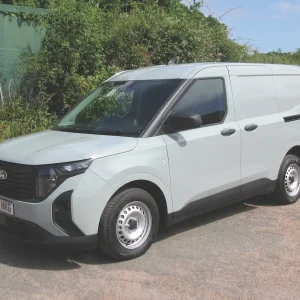Both fuels are environmentally-friendly, but while many public forecourts boast lpg pumps, cng dispensers are few and far between. They’re unlikely to be found at your local BP or Shell station, for instance.
Cng is popular in a number of Continental countries, however, which may explain why Mercedes-Benz is trying to promote its cng-powered Sprinter NGT (Natural Gas Technology) on this side of the Channel too. The European Union is encouraging the use of cng and wants it to account for 10 per cent of the fuel market by 2020.
While cng’s CO2 output is on a par with that of diesel, it produces virtually zero particulate emissions and burns cleanly which should help prolong engine and lubricant life. A high octane rating means that it burns at a high temperature too and that spells reduced engine noise.
Most importantly, it’s relatively cheap. Run a 3.5-tonner on it and you’ll find that it’s several pence per mile cheaper than increasingly-expensive diesel.
You can operate Sprinter NGT on cng’s close cousin, biomethane — landfill gas in other words — should you so wish. What’s more, the clean, green Mercedes is exempt from the London congestion tax and you can have it as a van, a minibus, a dropside or a chassis cab grossing at up to 5.0 tonnes.
Sprinter NGT is bivalent, which means it has the ability to continue on petrol should the gas tanks run dry. That gives it a typical range of up to 740 miles — 280 miles on cng alone — but it would of course make sense to fill it up again with gas as soon as possible given the high price of premium unleaded.
Auto-Switching
 It switches from one fuel to the other automatically, reverting to cng just as soon as there’s enough in the cylinders. A button on the dashboard allows the driver to switch manually if necessary.
It switches from one fuel to the other automatically, reverting to cng just as soon as there’s enough in the cylinders. A button on the dashboard allows the driver to switch manually if necessary.
As things stand Sprinter NGT complies with the Euro 4 exhaust emission rules. A version that meets the more demanding EEV (Enhanced Environmentally-friendly Vehicle) standard is also on offer.
In the past gas cylinders have often been positioned in a light commercial’s cargo area, stealing valuable carrying space. Sprinter NGT’s, however, are mounted beneath the load bed and saddle the van with a 150kg weight penalty.
Go for the EEV version and you can cut the overall penalty to below 100kg because it’s fitted with a 15-litre petrol tank rather than the 100-litre fitted to the Euro-4 model. Just don’t run out of cng if you opt for EEV.
 But where do you get cng? For some operators a do-it-yourself arrangement might just be the answer.
But where do you get cng? For some operators a do-it-yourself arrangement might just be the answer.
Mercedes says that gas makers are available that can be used to refuel cng vans from the domestic natural gas supply.
One that’s suitable to fill up the tanks on a 3.5-tonner will set you back around £7,000. It takes 12 hours to complete the task, which can be done overnight.
A fast-fill station may be a better bet for some types of operation, but will cost you considerably more; around £32,000.
No matter which option you choose, Mercedes can arrange to lease you a package. Government grants are available to cover the cost of such installations if you’re willing to let them be used by third parties.
Remember that any cng you put in your van’s tanks is taxed as a road fuel. You must pay the relevant level of duty.
On the Road
So what’s Sprinter NGT like to drive? We took to the roads around Milton Keynes in a 3.5-tonne example to find out.
With 156hp on tap at 5,000rpm no matter whether you run on petrol or gas — it starts on petrol — there’s no lack of performance from its four-cylinder 1.8-litre engine, which features a belt-driven supercharger. Top torque of 240Nm bites across a 3,000rpm-to-4,000rpm plateau.
On-the-road behaviour is little different from that of the diesel equivalent. However, the gas Sprinter is much quieter and that’s an advantage if you’ve got lots of early-morning deliveries to make and you don’t want to wake householders.
Sprinter NGT costs £4,000 more than the equivalent Sprinter diesel and Mercedes is predicting that the residual values will be much the same.
Verdict
Worth thinking about for sure if you’re making daily deliveries into the London congestion tax zone, or if you’ve got prospective customers who want you to meet demanding environmental standards before they’re willing to do business with you. Most operators, however, will probably find that it makes better sense to stick with diesel.

 While liquefied petroleum gas (lpg) has enjoyed some support among van owners in the UK over the years, compressed natural gas (cng) hasn’t provoked quite the same level of enthusiasm.
While liquefied petroleum gas (lpg) has enjoyed some support among van owners in the UK over the years, compressed natural gas (cng) hasn’t provoked quite the same level of enthusiasm. 



